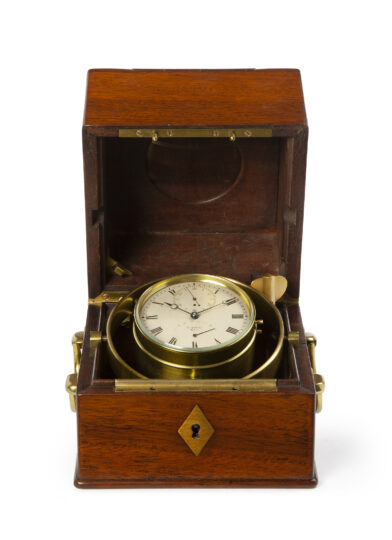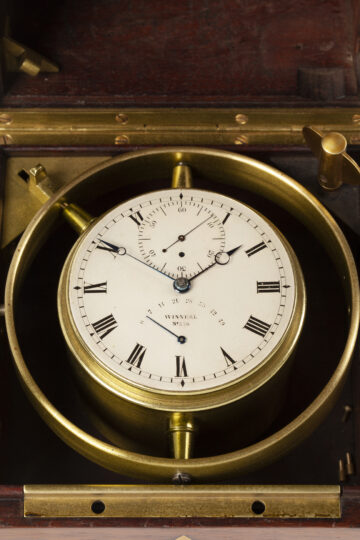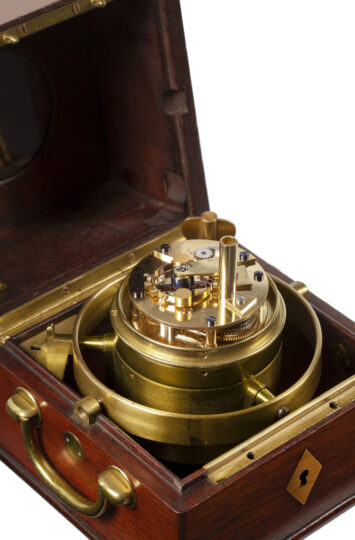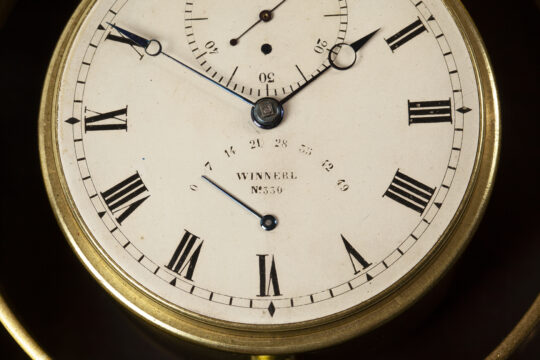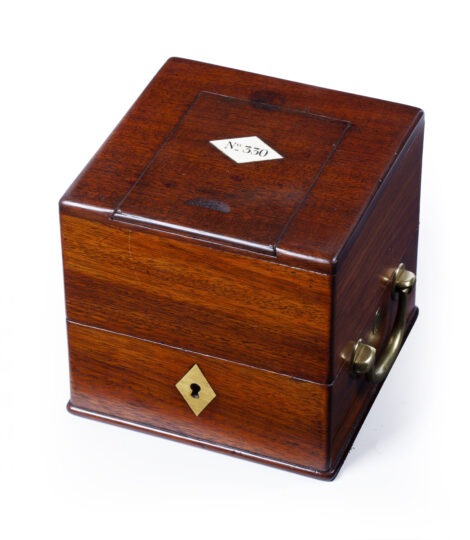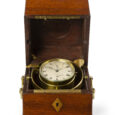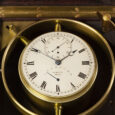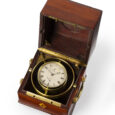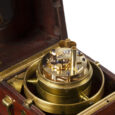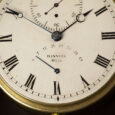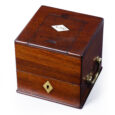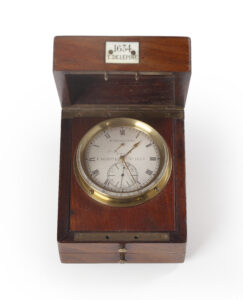MARINE CHRONOMETER Winnerl No. 330 Ca. 1850 France
M&R161
MARINE CHRONOMETER
Signed and numbered: Winnerl No. 330
Circa 1850
France
Movement
Single-fusee spring-driven movement between circular plates with Earnshaw detent escapement and compensation balance. The balance has regulation screws, which together with the blued steel helical spring, form the basis of the high accuracy of the time keeping. The movement also has maintaining power.
Dial
The silvered brass dial has Roman hour, five-minute and minute divisions. The segment below the middle indicates the power reserve, a so-called up-and-down dial (0-49 hours). The maker has signed and numbered the clock in the same area Winnerl No 330. The auxiliary ring above the middle indicates the seconds and has Arabic ten-second and second divisions. The time is indicated by a pair of blued-steel Breguet hands, whilst the seconds and the power reserve are indicated by blued steel pointers.
Case
The movement is situated in a gimballed brass bowl in a mahogany two-tier case. The key is kept in a hole in the right-hand top corner next to the movement. To the left is a securing mechanism to protect the movement when being transported. When the case is closed it is possible to move a slide to reveal the dial so that the time can be ascertained through a circular port hole. There is a lozenge shaped bone inlay in this slide with the chronometer’s number: No 330.
Duration 49 hours
Dimensions 14 x 14.5 x 14.5 cm.
Literature
-Tony Mercer, Chronometer Makers of the World, London, 2004, p.258.
The maker
Joseph Thadeux Winnerl was an eminent maker en was born in Styria, Austria from which he moved to Paris in 1829. It was there that he invented a split-second mechanism for chronographs. He died in 1886.

